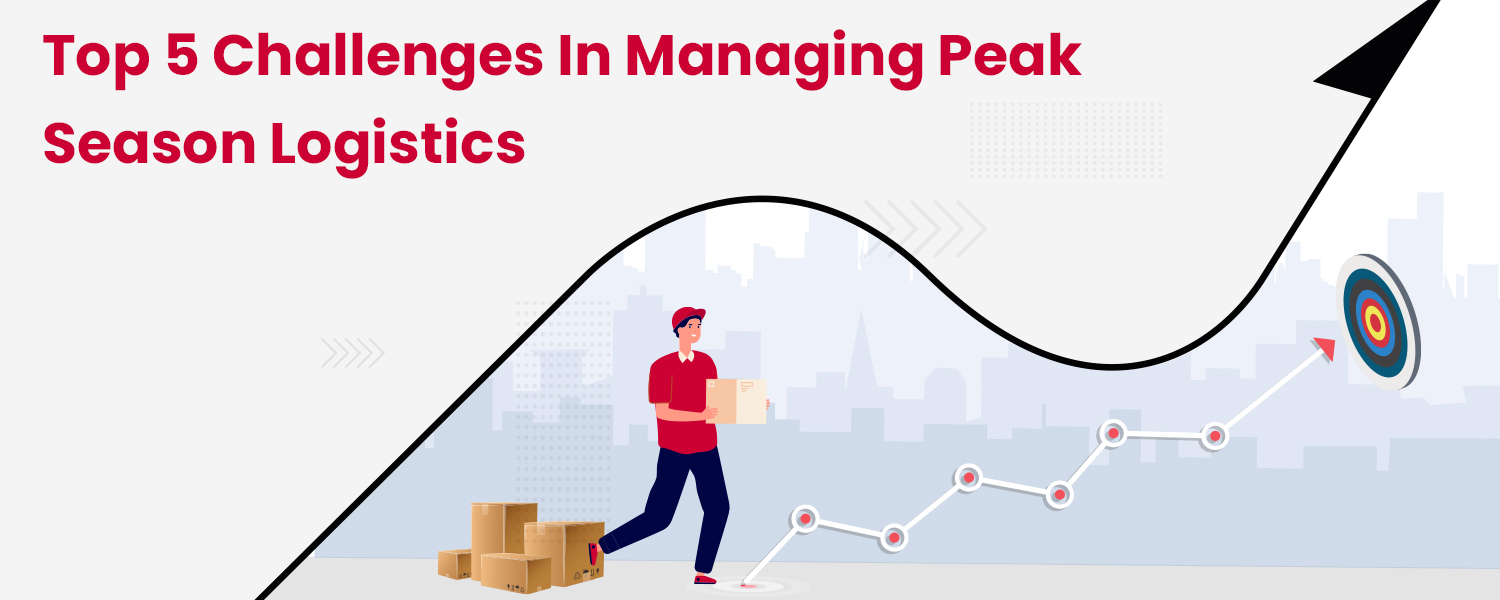Peak season logistics is one of the most challenging jobs for supply chain managers. Effective peak season planning might be the difference between the success and failure of a company’s operations. Customer expectations have risen due to the explosion in eCommerce and worldwide shipping. Logistics service providers are concerned about peak season logistics constraints.
Shippers must first grasp the complexities of managing peak season logistics efficiently to realize the benefits of an enterprise during peak season.
During the busiest times of the year, there is a need for high freight capacity. Moreover, the current peak season is also tough for shippers because of market pressures such as the new tariffs introduction and other difficulties, making planning more complex. As a result, shippers must grasp the complexities of handling logistics during 2021’s peak season to attain success.
Top Challenges in Managing Peak Season Logistics
1. Increasing Levels of Consumer Engagement
The 2021 peak season was projected to be below the growth rates experienced in 2020. Nonetheless, good growth is expected owing to the increased consumer activity year after year. Shipping companies and their transportation experts have to deal with this regularly, even if growth rates do not surpass the previous years. Increased consumer revenue and sales provide new avenues for profit. However, with customers expecting a free and rapid shipment, shippers must do everything they can to keep up with the demand while saving money on transportation. Because of this logistics constraints are major happened.
2. Customers Want Faster Delivery Times
Logistics procedures need to be enhanced more than ever to satisfy customer expectations for quicker, Amazon-like delivery speed. It is a dilemma that affects businesses of all sizes, as they compete with one another to remain ahead of Amazon. Most shippers do not have the resources or economies of scale that firms like Amazon possess to provide rapid and free shipping on products. As the holiday shopping season approaches, people will be more likely to purchase with Amazon than your firm. According to logistics constraints management, 61% of respondents expect customer expectations to be greater this supply chain season than last year.
Because of this, shippers should think about these major issues as they get ready for the busy holiday season and develop a mentality for perfect performance.
3. Due to the Lack of Time to Review and Correct the Incorrect Orders
Another major issue for shippers nowadays is running out of time. During the busiest times of the year, shippers need as much time and resources as possible. A customer’s error is the shipper’s problem to correct, so be sure you get your order before you check out. In addition, shippers will be under increased pressure to handle the peak season logistics efficiently as new data grows. As a result, a Transportation Management System should be used by all shippers (TMS). With a TMS, shippers can maintain consistency while reducing the number of costly fulfillment mistakes.
4. Space Constraints in the Warehouse
Another issue in the minds of supply chain executives is the availability of resources. Due to a shortage of warehouse space, customers have to turn to logistics service providers more often to fulfill their orders. Since there is insufficient warehouse space, carriers are already under pressure from new shippers joining the global marketplace with few or no resources.
5. WMS that is more than a decade old or not integrating WMS and TMS
Customers already working with a supply chain should evaluate if their warehouse management system (WMS) is up-to-date. Outdated systems slow down an organization’s present procedures. According to My Total Retail, a modern, cloud-based WMS boosts fulfillment speed and agility. Delivering end-to-end solutions that provide specific accountability across the supply chain would help shippers save costs and enhance customer satisfaction with an upgraded WMS.
If the TMS and WMS operations are not properly connected, another problem will develop. There are issues when the WMS and TMS do not communicate. The inability to communicate data may cause problems, and leaders in the supply chain will not enhance supply chain operations in real-time. Failure to connect the WMS and TMS operations may aggravate supply chain difficulties and degrade supply chain functions, leading to a bad customer experience.
Automation and Transparency in Delivery are Becoming Increasingly Popular
Customers also expect increasing automation in the delivery process. As merchants and logistics providers have pushed to automate procedures that give efficient delivery choices, customers’ expectations have risen. As a result, shippers must endeavor to offer prompt, proactive delivery in addition to fulfilling orders and making sure they arrive on time. When it comes to automatic tracking alerts, shippers should choose solutions that give consumers real-time access to the status of their shipments. Even in B2B transactions, companies need to watch real-time delivery status to stay on top of any potential problems.
Use an Automated and Advanced TMS to Overcome Peak Season Logistics Obstacles
The logistics constraints during the busiest time of the year are obvious. In the months leading up to peak seasons, shippers and LSPs devise elaborate methods to meet their customers’ demands. However, unforeseen issues still emerge. So, instead of just wishing for a better next year, make sure to identify your shortcomings and work on them to improve them.




